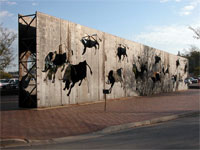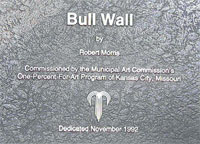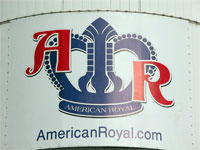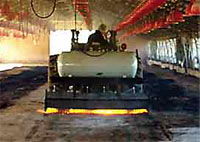 I sure appreciate the hospitality afforded by AgWired, thanks so much for the opportunity to make some guest posts on your excellent blog.
I sure appreciate the hospitality afforded by AgWired, thanks so much for the opportunity to make some guest posts on your excellent blog.
As Chuck indicated earlier today, I’m Keith Good and I write about current farm policy news events at FarmPolicy.com. I’m a licensed attorney and stay-at-home parent who has been blogging about farm policy for nearly two years. I hope you find the farm policy updates useful.
Negotiating activity at the on-going W.T.O. Doha Developmental Agenda trade talks has dominated farm policy news this past week.
Earlier this month, U.S. Trade Representative Rob Portman laid out a bold U.S. proposal at the talks, offering to cut U.S. “amber box” payments, which include some trade distorting subsidies, by 60%.
A recent New York Times article summed up the proposal by saying, “The United States is seeking to swap cuts in subsidies for more access to global markets for its farmers. The European Union, while making some concessions, has so far declined to lower tariffs much further.”
Meanwhile, France has rigorously opposed EU Trade Commissioner Peter Mandelson’s leeway as the talks progress.
As Tom Wright noted in Wednesday’s International Herald Tribune, “The French foreign minister, Philippe Douste-Blazy, had sought to force Mr. Mandelson to seek approval from the union’s 25 nations before making any fresh offers at the trade negotiations, which resume Wednesday in Geneva.”
An editorial from Friday’s Wall Street Journal summed up the French position this way, “France now stands in the way of a trade deal that would truly help poorer countries, all because a few middle-class farmers in the French province — not to mention agribusiness — are afraid to compete with poor farmers in the Third World.”
And, as Dr. Robert L. Thompson, the Gardner Chair in Agricultural Policy at the University of Illinois, has recently explained, Midwestern corn and soybean farmers could benefit from a successful Doha outcome.
“Midwestern producers have a great deal to gain from trade liberalization as demand in low income countries for products in which they have a comparative advantage, particularly corn and soybeans, outstrips those countries’ own productive capacity. It is the acceleration of economic growth in presently low income countries that has the greatest potential benefits for internationally competitive producers,” Dr. Thompson noted.
So despite the possibility of potential changes in future policy, new and expanded opportunities for some producers are certainly possible.
Keith Good writes The FarmPolicy.com News Summary, an Email newsletter containing a summary of news relating to U.S. farm policy which is published most weekdays. To sign up for this FREE publication, just send him an Email.

 Outside the American Royal is a very large and very unique metal structure called “Bull Wall.”
Outside the American Royal is a very large and very unique metal structure called “Bull Wall.”  Since one would wonder about what this is, there’s a sign that explains it all. I’m guessing the artist, Robert Morris, had a lot of people wondering what the heck he was doing. I assume he used some kind of welding equipment to make this thing.
Since one would wonder about what this is, there’s a sign that explains it all. I’m guessing the artist, Robert Morris, had a lot of people wondering what the heck he was doing. I assume he used some kind of welding equipment to make this thing. The
The  Let’s give a great big AgWired welcome to Keith Good. Why? Because starting today Keith will be our first regular writer! Keith is a blogger and you can find him on
Let’s give a great big AgWired welcome to Keith Good. Why? Because starting today Keith will be our first regular writer! Keith is a blogger and you can find him on  I haven’t said much about avian flu because I just don’t really know much about it. However, when you’ve got one of these flame shooting poultry house sanitizers we may just not have to worry too much! I like propane (I just wish it were cheaper) and here’s a great use for it. In fact, if you want to see a video of
I haven’t said much about avian flu because I just don’t really know much about it. However, when you’ve got one of these flame shooting poultry house sanitizers we may just not have to worry too much! I like propane (I just wish it were cheaper) and here’s a great use for it. In fact, if you want to see a video of  The Red Dragon, a new implement from Flame Engineering, Inc. (LaCrosse, KS), utilizes six liquid propane torches that project intense, sweeping flames underneath a sturdy steel hood to kill bacteria. The heat from the flames stays constant at approximately 1400° F, which is hot enough to effectively eliminate a host of harmful pathogens.
The Red Dragon, a new implement from Flame Engineering, Inc. (LaCrosse, KS), utilizes six liquid propane torches that project intense, sweeping flames underneath a sturdy steel hood to kill bacteria. The heat from the flames stays constant at approximately 1400° F, which is hot enough to effectively eliminate a host of harmful pathogens.
 Maybe I could enter as an “old” student and be an ambassador for beef! If you read AgWired you’ll probably get the impression that I think beef is good. But if you’re a real student you can compete for some cashola.
Maybe I could enter as an “old” student and be an ambassador for beef! If you read AgWired you’ll probably get the impression that I think beef is good. But if you’re a real student you can compete for some cashola. The National Beef Ambassador Program provides leadership training for the youth beef ambassadors, who advance the interests of the beef industry through promotion and peer education. The program is funded in part by America’s Beef Producers through the Beef Checkoff Program and is administered by
The National Beef Ambassador Program provides leadership training for the youth beef ambassadors, who advance the interests of the beef industry through promotion and peer education. The program is funded in part by America’s Beef Producers through the Beef Checkoff Program and is administered by  There’s some new people on the
There’s some new people on the  Want to know what’s in the foods you eat? USDA’s
Want to know what’s in the foods you eat? USDA’s  It’s time to kick off a new week of stories here on AgWired. Let’s start with
It’s time to kick off a new week of stories here on AgWired. Let’s start with